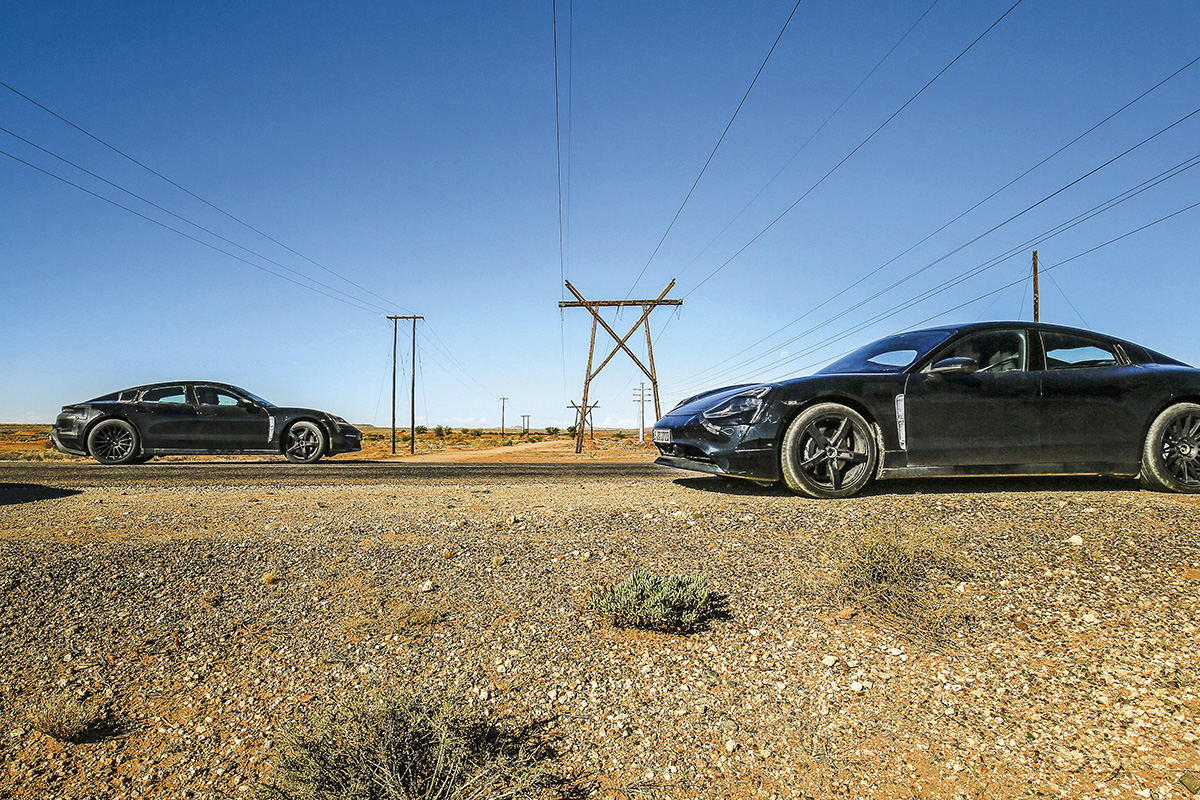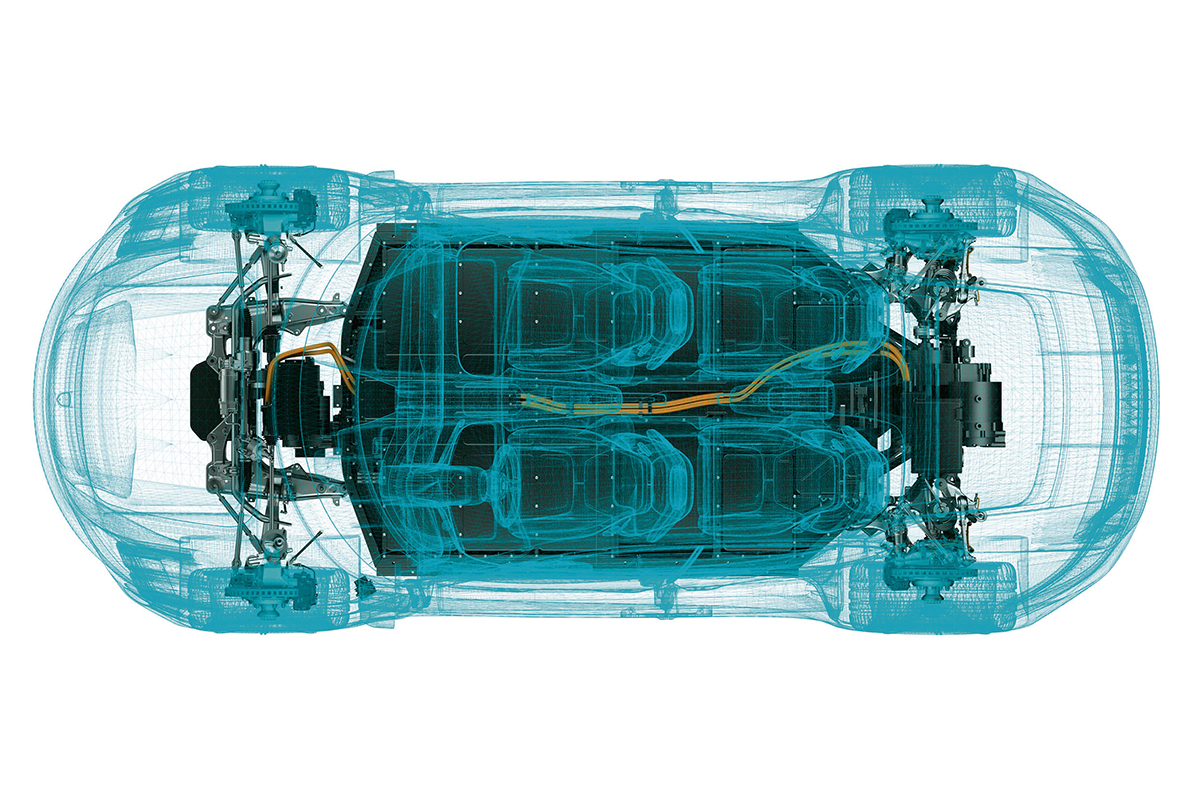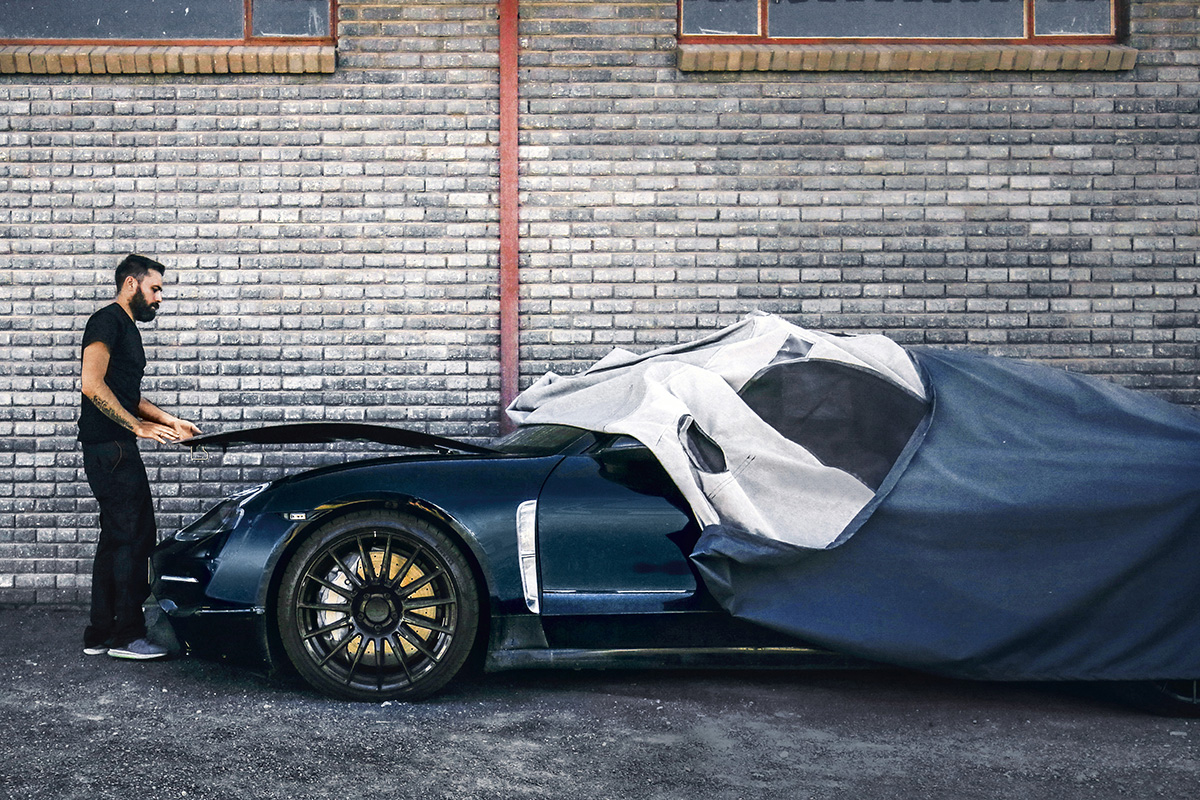We first met the Mission E concept at the Frankfurt Motor Show back in 2015. This was followed by little more than a few stylised product shots and some impressive if unsubstantiated claims about performance, range and charging capabilities.
But behind the scenes, Porsche is embracing a paradigm shift, earmarking vast investment for future development while dramatically redesigning and extending its site in Zuffenhausen to accommodate an all-new production line.
The Taycan, as it is now officially known, remains a highly secretive project, but it will nevertheless be unveiled next year and arrive in showrooms by 2020. Prototypes are now regularly visible on public roads, and hot and cold weather testing is underway around the world.
In one part of South Africa, more than sixty Porsche developers recently putt 21 camouflaged prototypes through their paces in temperatures as high as 40 degrees Celsius. Around 40,000km were covered on that trip alone, and it is expected that by the time the Taycan officially arrives, the total will run comfortably into the millions.

It’s a monumental feat, both conceiving and creating a completely new architecture that enables an 800-volt all-electric powertrain to deliver the sort of performance Porsche demands of its cars while still providing viable range and recharge time.
The engineers in Weissach have developed a drivetrain for the Taycan that borrows extensively from the 919 Hybrid. “We opted for a permanently excited synchronous motor in the Taycan,” reports Heiko Mayer, drive unit project leader. “They combine a high energy density with strong sustained performance and maximum efficiency.”
Permanently excited synchronous motors or ‘PSM’ generate a constant rotary motion that can be applied at any time without needing to be started. With high and sustained performance and efficiency, they are, in effect, the turbos of the electric motor world. One motor powers the Taycan’s rear axle, the other the front wheels. Together they generate in around 600bhp, enough to see off 62mph in under 3.5 seconds and 124mph in under 12.
But while Porsche learned a huge amount about electric motors from LMP1, a full electric system and the battery power and attendant cooling it demands, was unchartered territory when Mission E got the go-ahead.

Existing battery systems are hampered by poor range, long recharge times and, from a sporting perspective, the dread spectre of extra weight. Lots of it. The Mission E solution is to eschew heavy batteries in favour of fast charging. The entire floor the Taycan is made up of 400 battery cells. Each individual cell has an approximate current of four volts, equating to an 800-volt system. “It was a major challenge to achieve such enormous battery capacity both for charging and discharging over the entire temperature range,” says Nora Lobenstein, head of all energy storage systems at Porsche.
The answer was what Porsche refers to as ‘intelligent charging protocol’ and a highly efficient heat exchanger that whisks the batteries up to operating temperature while being able to keep them cool them under heavy loads.
The target that Porsche has set for the Taycan’s fast-charging system is a compelling one: 250 miles from around 15 minutes on the socket. This would indeed be game-changing, as the principal downside of roadside charging remains the sheer length of time a driver must wait to top up, a factor worsened by a physical shortage of chargers.
A joint venture between Ford, Daimler, BMW and the VW Group known as Ionity is already aiming to establish 400 fast-charging stations across Europe’s major arteries by 2020. But with the Taycan’s projected production rate standing at about 20,000 units a year, or roughly two thirds that of the 911, will this be enough?

As the first established sportscar manufacturer proposing an all-electric product, Porsche has plenty of hurdles to leap. Not only must it win over those unconvinced by the technology and infrastructure, but also the performance purists who maintain that an electric car cannot offer them what conventional combustion already does.
But Porsche’s vision is clear. It wants to shift to electromobility before all other German auto manufacturers and by 2025 its stated aim is for every second Porsche sold to have an electric drive unit. And the firm is insistent that the Taycan will be in every way worthy of the badge; a bona fide sportscar. Roll on 2020.